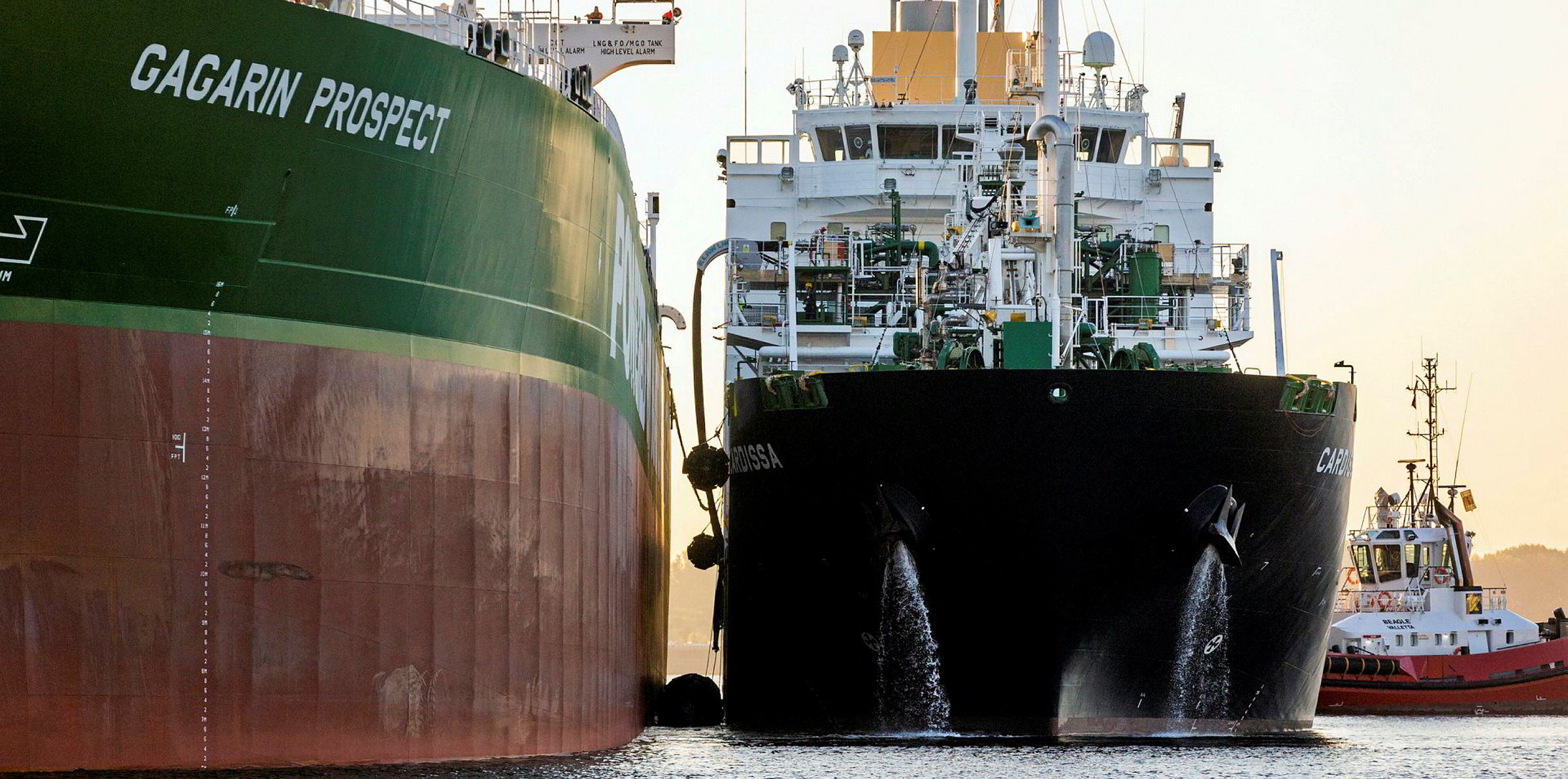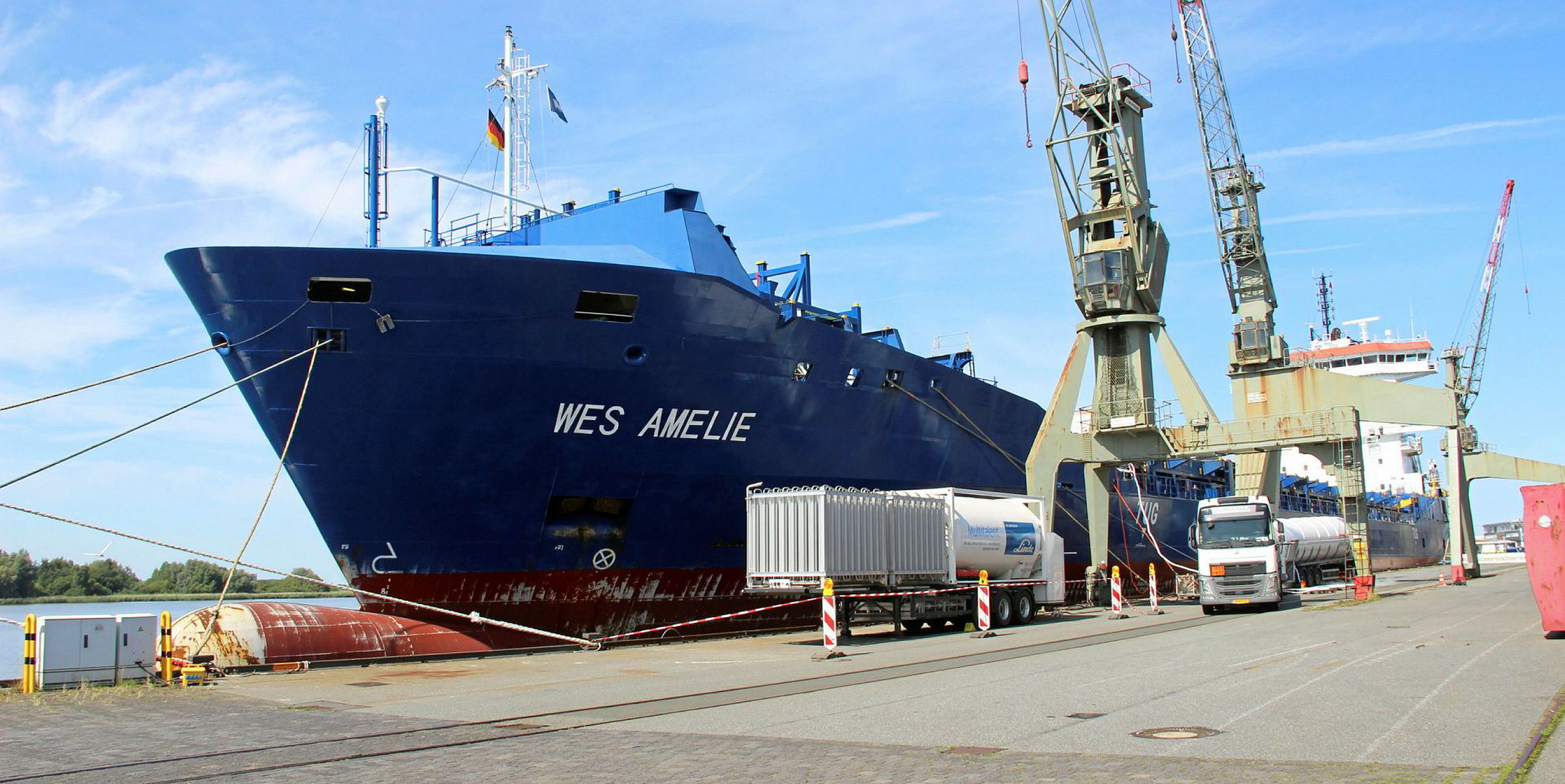Choosing LNG as a fuel can give a vessel up to eight years more emissions compliance and make it eligible for cheaper finance over ships built to use conventional fuels, according to industry coalition SEA-LNG.
As it unveiled its new analysis, SEA-LNG pointed to the Poseidon Principles, which provide a framework for financial institutions to measure the emissions of ships they finance. And they allow banks to align these with the IMO’s reduction targets by using a carbon intensity metric for vessels, the Annual Efficiency Ratio (AER).
SEA-LNG said that an LNG-fuelled newbuilding ordered today for 2022 delivery and trading at normal market speeds would remain in compliance under the AER scoring until 2032.
A slow steaming LNG-fuelled vessel would remain under AER compliance until 2035.
In contrast the group said a newbuilding ordered with a conventional propulsion system that uses high sulphur fuel oil, very low sulphur fuel oil, or marine gas oil, would dip under the AER in 2026 at normal speeds and 2030 if slow steaming.
Using LNG as a fuel offers a 28% reduction in CO2 emissions on a tank-to-wake basis on which AER is calculated, SEA-LNG said.
That allows a vessel to remain under the decarbonisation trajectory — which requires a vessel’s aggregate carbon emissions intensity to improve over time — for longer, the industry group added.
Cheaper funding
“SEA-LNG’s analysis found that LNG fuel can extend the emissions compliance runway for five to eight more years for owners across all market scenarios,” the group said, averaging this as “seven extra years additional competitive advantage for Poseidon Principle loans".
Coupled with this AER scores are also key for determining the interest rates charged on ship finance, the coalition said.
The group referred to data it had gathered from public US Securities & Exchange Commission (SEC) filings – without revealing the company source – which it said showed a potential loan interest reduction or increase of 10 basis points, depending on whether an AER score is good or poor performing.
SEA-LNG chief operating officer Steve Cadden told TradeWinds that the additional compliance period offered by selecting LNG-fuelling is a “significant amount of time”. He said it allows owners to begin dropping in bio-LNG or liquefied synthetic methane (LSM), which would reduce emissions further.
“You can’t do that with a conventional-fuelled ship,” he said.
Competitive advantage
SEA-LNG investment committee chairman John Hatley, who is Wartsila Americas vice president for marine solutions & director for market shaping , said the coalition has initiated early day discussions with signatories to the Poseidon Principles.
Similarly, the group is also exploring talks with the newly formed Sea Cargo Charter grouping of 17 major charterers that committed publicly to cut greenhouse gas emissions.
Hatley said there are three essential things for a shipping company to succeed – access to finance and refinance, access to charter revenues and a good ship and good people.
He said through the Poseidon Principles and Sea Cargo Charter, the IMO’s 2050 ambitions are now being put into practice by the banks and the charterers.
A ship that able to comply with these “two industry powerhouses” beyond other vessel alternatives has a competitive advantage, Hatley said.
"The LNG fuel benefits do provide a prolonged beneficial emissions compliance runway extension of eight plus additional years during strong markets with elevated speeds amongst vessels consuming greater fuel quantities," Hatley added.
“Each owner has to make their own decisions,” Cadden said, adding that the Poseidon Principles is another input to that process.
“The competitive advantage for LNG under these principles is significant,” he said. “Seven years is a long time and it provides a lot more optionality for the owner.”
Cadden said the orderbook for LNG-fuelled ships is now growing.
“We are pretty confident that the LNG case is a good one," he added.








